News from the Conservation Studio - Conservation of 100 Letters
Our conservator, Anna-Klara Hahn, would once again like to share with you, the fascinating work that goes on behind the scenes at P&O Heritage.
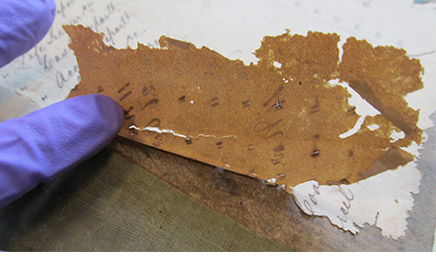
Introduction
The P&O Heritage Collection gratefully receives wonderful and unique donations every year from members of the public. We strive to preserve these donations and our collection for the future generations through the highest standard of conservation, cataloguing and digitisation.
One such donation was this Letterbook, which was kindly gifted by Ms. Wendy and Mr Robin Palmer, found it in a camphor wood chest among their mother’s effects in 2008.
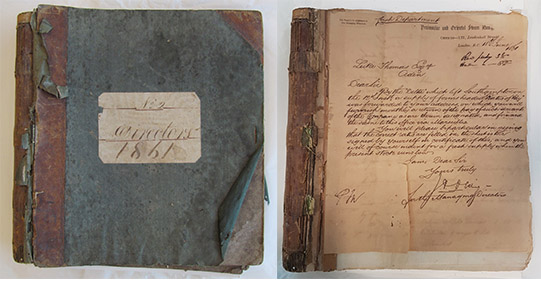
Like so many of our donors, Wendy and Robin are not entirely sure how such a rare volume came to be in their family possession, but recall that their father, Mr. Leslie Palmer worked in Aden during the Second World War and later for B.I./P&O in Bombay and Calcutta until 1963.
Some further digging in our records, reveals that, Mr. Leslie Palmer joined P&O in 1932 and was posted to Aden, where he was seconded to the Ministry of War Transport in 1939. After the War, he worked at P&O Agent’s Mackinnon, Mackenzie & Co. offices in India. In 1963 he returned to London where he joined the B.I. Company, where he was engaged on Steamers Conference duties until his death in 1970.
Contents & Description
This Letterbook entitled “No.2 Directors 1861”, contains 100 handwritten letters sent from the Managing Directors’s Senior Clerks at the P&O Head Office in Leadenhall Street in London, addressed to the P&O Aden Agent; dating from 12th June to 18th December 1861.
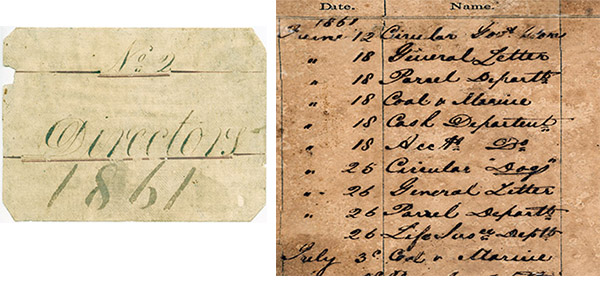
Among the commonly raised topics, such as the mail shipments; account balances; the endless problems with the coal stocks; boiler makers and ice-machines there is a charming Circular about the need to log any freight of dogs in the ship’s manifests.
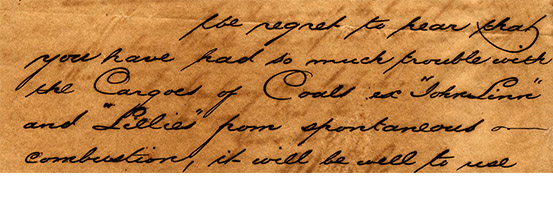
Historical Context
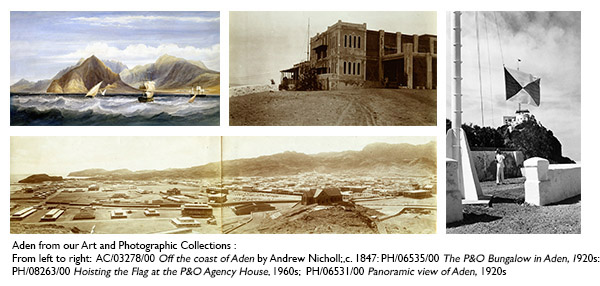
P&O set up an organisation in Aden, the “Key to the Red Sea” in 1842 in connection with extension of its mail service to India. It became the main station to service its ships; a base for stores and large coaling port.
The P&O Agent and his staff occupied a large compound acquired by the Company in 1855. High above sea level the ‘bungalow’ at Steamer Point had commanding views of Aden harbour and a large mast head flying the P&O Flag when the Company ship was in port (as can be seen in the images above).
At the time of this Letterbook, the P&O Agent was Captain Luke Thomas and his deputy Mr. William Davies.
Condition
The Letterbook, a case binding with cloth cover and leather covered spine, was made up of 125 pages, stictched and glued together in 25 sections.
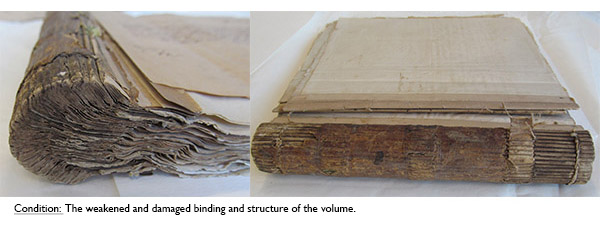
The volume was in a very poor condition on receipt. It has suffered some water damage in its past, leaving the boards very warped and stained. The front cover was detached from the textblock, the binding weakened and the fragile contents of handwritten letters were not easily accessible.
The papers were very brittle; creased and torn; and had suffered plenty of losses, from insect damage such as common bookworm and silverfish and perhaps other more exotic pests from Aden itself.
The ferrous and corrosive iron-gall writing ink, mainly used, had literally burnt through the paper, resulting in loss of text and causing the paper to become even more brittle.
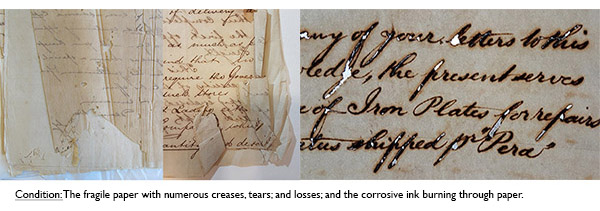
Handling the volume possed a continuing high risk for further loss. As such extensive conservation would be required, for the letters to be truly acessible and use to researchers.
It was therefore decided to break up the binding and to be able to assess and treat the pages individually. The original format was extensively recorded and samples of the materials saved. Each page was numbered with a soft pencil on the verso to keep track the original sequence of the letters, which has now been recorded on the catalogue. Although the letters will be rehoused in individual polyester sleeves, they’ll be kept in the same order as within the volume itself.
Conservation
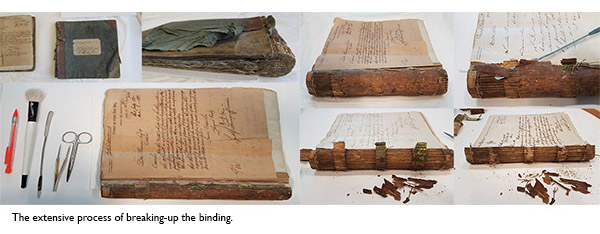
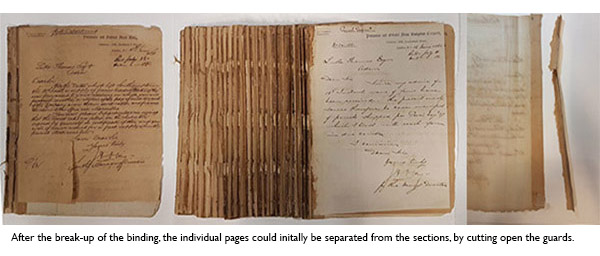
Following the breaking-up of the binding, and separating out the sections, the individual pages were removed from the sections and surface cleaned with chemical sponges and soft brushes.
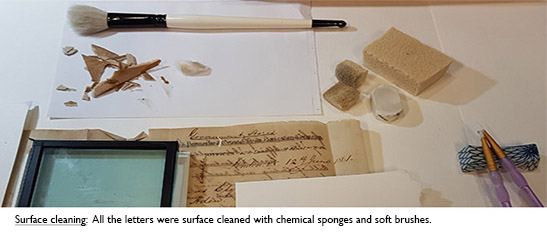
The folded strips of thick paper (guards) adhered to the pages were removed by the application of a localised Methylcellulose gel poultice to soften the glue.
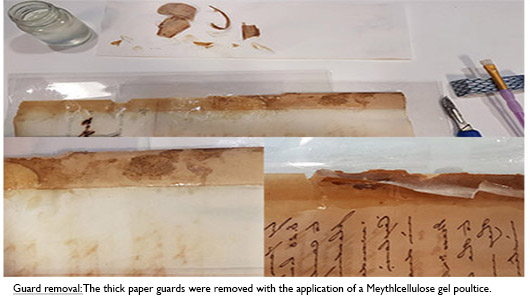
Each page was sprayed with light moisture vapour/mist on both sides, allowing the paper to relax and enabling the gentle manipulation of some of the folds and creasing, before being placed between dry blotters and under weights.
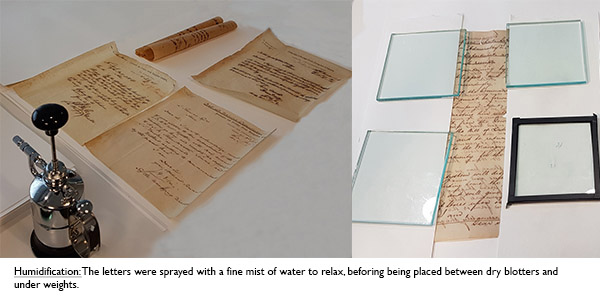
The torn papers were repaired and weakened areas were supported with thin Japanese repair tissues (Tengujo 5gsm and 9gsm) and a dry wheat-starch paste. A few of the very weakest pages were fully lined for extra support.
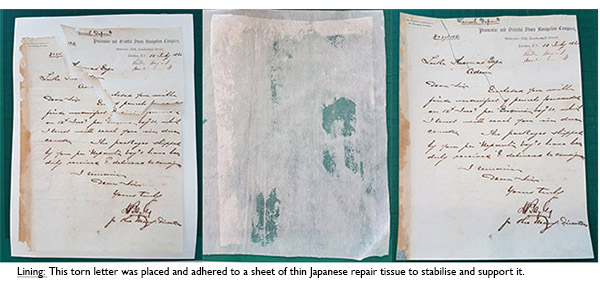
Digitisation & Access:
Following the conservation treatments the letters have all been catalogued, digitised and, digitally enhanced and optimised for increased legibility and to allow full transcription.
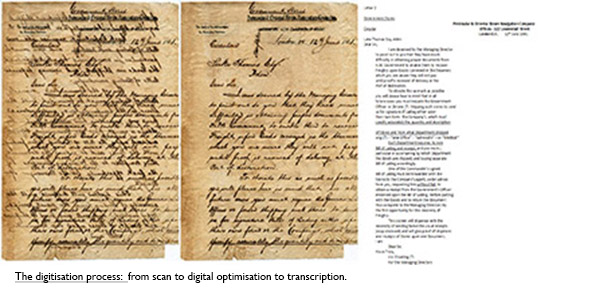
For future safe handling and long-term storage, the pages have been rehoused individually in polyester sleeves, which allows access to both sides of the document, where needed, (otherwise on support paper to provide extra strength to the brittle paper) without direct handling. The sleeves will be stored flat in an archival box.
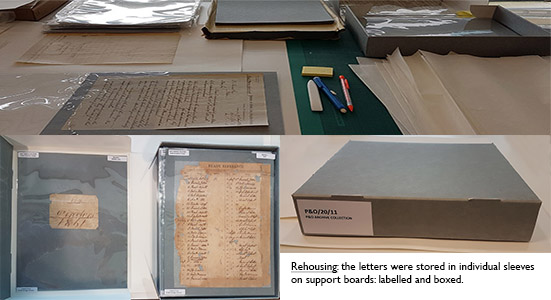
These letters (P&O/20/11) will now be added to P&O’s extensive business archive, which is available to members of the public in the Reading Room at the National Maritime Museum, in Greenwich.
To find out more about our archive:




